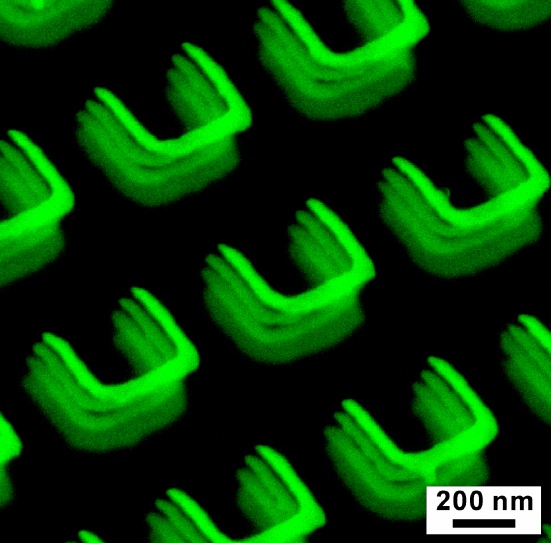As have scientists. Metamaterials have been the effort of the decade to make invisibility practical. Although cloaks designed to shield objects from both terahertz and near infrared waves have already been designed (see Invisibility Advance - 3D Cloaking Metamaterial In Optical Range Created), a flexible material designed to cloak objects from visible light poses a greater challenge because of visible light’s smaller wavelength and the need to make the metamaterial’s constituent part – meta-atoms – small enough to interact with visible light.
Invisibility in the visible wavelength has been achieved, but in 2-D.
The fabrication of metamaterials that can be detached from the hard surfaces they are developed on, so they can be used in more flexible constructs, is now a little closer. A research team, led by EPSRC Career Acceleration Fellow Dr Andrea Di Falco, has developed an elaborate technique which frees the meta-atoms from the hard surface ('substrate') they are constructed on.
The researchers predict that stacking them together can create an independent, flexible material, which can be adopted for use in a wide range of applications. They call it Meta-flex and say it overcomes both of these challenges.

3D metamaterials. Gold nano split ring resonators are stacked (Universität Stuttgart/ MPI)
Di Falco says, "Metamaterials give us the ultimate handle on manipulating the behaviour of light. The impact of our new material Meta-flex is ubiquitous. It could be possible to use Meta-flex for creating smart fabrics and, in the paper, we show how easy it is to place Meta-flex on disposable contact lenses, showing how flexible superlenses could be used for visual prostheses."
Citation: Andrea Di Falco, Martin Ploschner and Thomas F Krauss, 'Flexible metamaterials at visible wavelengths', New J. Phys. 12 (2010) 113006 doi:10.1088/1367-2630/12/11/113006 (open access, free to read)





Comments